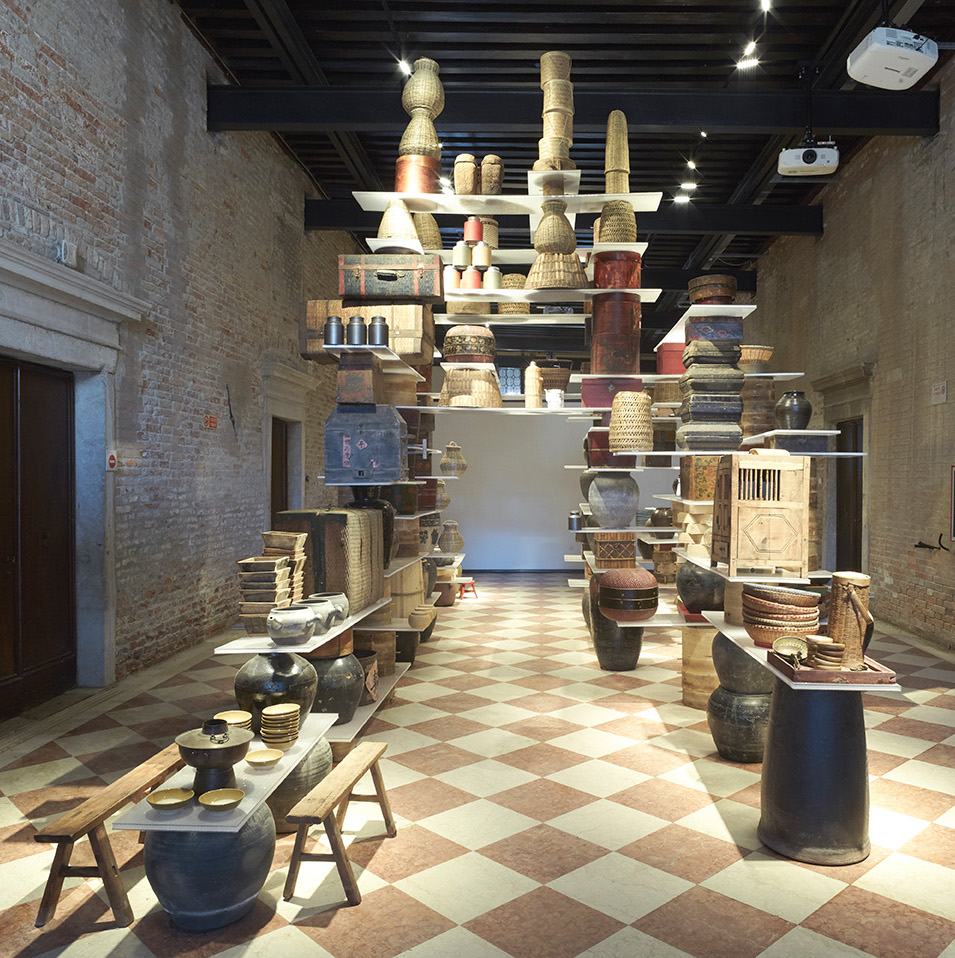VENICE — We’re big fans of Kengo Kuma here at CFile. We’ve profiled a few of his fantastic works on this site before, everything from a folk art museum to a “ceramic cloud.”
His studio is currently exhibiting in Italy, as part of the Venice Architecture Biennale 2016. In an exhibition Designboom dubbed “The Floating Kitchen,” Kengo Kuma isn’t creating a proposal for a kitchen itself as much as he is arguing for a re-assessment of design. He argues that a focus on cleanliness is taking away the more organic, human and exciting features of kitchens.
Below are portions of his interview with Laura Sattin of Designboom. Be sure to read it in full on their website. The exhibition is on view through September 30, 2016. From the interview:
you are accumulating different traditional objects in order to show the richness of their diversity. I know your projects have been tackling the issue of linking tradition and innovation for a long time. the exhibition brief was about using the kitchen as a symbolic theme for reflecting about the future of the living environment: how do you perceive the presence of tradition in this sense?
about tradition, I would like to say that, traditionally, the kitchen is a very exciting space, because we can see it as a collection of food, of tools… and all the kind of things which used to be the protagonists of the kitchen. in the 20th century cleanness became the goal of kitchen design. in the industrial era people liked to create very standard, systematic, monolithic spaces, somehow hiding the exciting aspects of the traditional kitchen. I think this is a real pity for our lives, because living things should always have the central role: during the 20th century, we killed those kinds of lives. with ‘the floating kitchen’ I wanted to show those exciting elements and give the impression of a kitchen which is very different from the 20th century one.
you designed this installation through a very poetic approach, different from the usual way of exhibiting architecture. which way do you think is most effective for exhibiting architecture? what did you want to conceive with this kind of artistic installation, what did you want to express to the public?
‘the floating kitchen’ is a kind of message to the public that can be adapted to, but also overcomes architectural design: it is not a proposal for a new kitchen, it is a proposal for a new approach to design. my message is: in architectural design, the living elements should always be the protagonists. in the 20th century, architects wanted to become the only protagonists, they wanted to control everything and tried to kill every living element in their design: it was a big mistake of 20th century architecture and I want to find a different way of expressing architecture.
I was curious about the topic of the kitchen as a starting point for researching and inspiring new modalities of conviviality and of social and spatial forms in both the private and the public realms. what are your thoughts on the relation between food and space design? the kitchen as a starting point: for you, is food important in design?
I think that food is the prime and main thing of our daily lives. people are talking a lot about how to relate to nature and the environment: actually, I think that this happens in the space of the kitchen. the kitchen is the real interface between nature and our lives. therefore, this is the most important space in the house. people misunderstand the living space as the most important, but I do not think so: I think the kitchen is the most important one, because it is where we can define the relationship between nature and humans. especially for chinese people, food is very important: chinese people understand the value of food in life. I respect their kind of lifestyle and with my installation I want to show my respect for this culture.
Do you love or loathe these works of contemporary ceramics? Let us know in the comments.






Love!